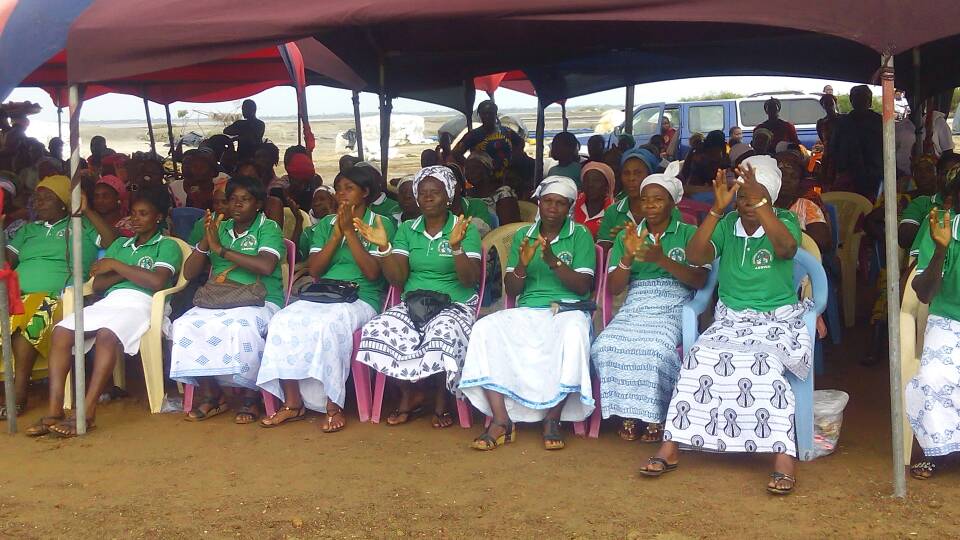
By Frederick ASIAMAH
In frequent interactions with people from the Ada-Songhor area, there is a common argument that comes up: ‘you cannot divorce the Ada man from Songhor. Culturally, the Songhor is part of Ada and Ada is part of Songhor. So you cannot divorce or separate the two.’
Economically, the argument is that by their tradition, the people have depended on the Songhor Lagoon for years.
Until recent years, it was the case that inhabitants of the over 20 communities surrounding the Songhor Lagoon would expect that during the dry season, the lagoon’s water would crystallise into salt. They would then carry containers of all sizes, go to the field and gather as much salt as possible to sell and raise income for their families.
This is no longer the case! Today, many people – some very young – appropriate parts of the Songhor Lagoon to themselves through the practice of Atsiakpo, which is the Dangme term for dikes or pans created in the bed of the Songhor Lagoon or near it by individual salt winners.
These persons pump brine into the dikes, wait for salt to crystallise, and then bag it for sale.
The methodology is said to be employed by individuals described as powerful, richer and stronger who often recruit women and children as labourers in exchange for paltry payments.
 Now, a women’s group for salt winners in Ada-Songhor has given a reminder about the need to address the selfish and unsustainable salt winning method that is akin to galamsey in the metal mining sector.
Now, a women’s group for salt winners in Ada-Songhor has given a reminder about the need to address the selfish and unsustainable salt winning method that is akin to galamsey in the metal mining sector.
According to the group, called Ada-Songhor Saltwinner Women Association (ASSWA), there should be “a return to equitable communal access to the Songhor that allows everyone to make a living independently, a livelihood for all.”
ASSWA President Mary Akuteye argues that it was a similar inequitable access to the lagoon that led to the death of one Margaret Kuwornu about 32 years ago.
Using the platform of a remembrance ceremony recently held for Margaret at Bonikope, a community in the Ada West District and one of the communities surrounding the Songhor Lagoon, Ms Akuteye read out the demands of ASSWA, including a call for the “Upholding of PNDC law 287 which states that the Songhor should be developed for the benefit of its contiguous communities and in the public interest.”
Slavery and sexual favours
Jane Ocansey, 44 years and a mother of four, lives at Korluedor. Speaking with Business Day Ghana, she said “We are at a point where things have really gone bad. The atsiakpo has taken over the shores of the lagoons.
“We, women, serve as labourers for these miners. Meanwhile we are both natives of Ada.
“They pay me one cedi for a pan that can contain two buckets. As a labourer, you scoop the salt and carry to a designated place and get paid one cedi for it. So, if you are not strong and can only fetch 10 pans you get paid 10 cedis.
“I have decided that I will not become a slave to my fellow native of Ada. I have also instructed my children not to carry for anyone.”
When Doris Mensah joined the interview, she revealed that besides paying so low for the services of the labourers, some of the salt winners ask for sexual favours in return for employment.
Furthermore, fights are breaking out to the extent that some are even drawing daggers over the atsikpo; all in their attempt to protect their territories.
“We are women and we are concerned about the future of our children. Thus, we are dedicating ourselves to fight this menace in the belief that government will support us to cover up all the pans and leave the beaches free,” Madam Mensah said.
Emergence of Atsiakpo
It is estimated that Ghana has about 500km coastal front with a total production potential of 2.2 million metric tonnes per year. Actual production is estimated 250,000 metric tonnes per year, of which about 62,000Mt is exported annually, yielding US$ 3.043m in 2007. It is believed that actual exports are higher.
The Songhor Lagoon, according to experts, holds the nation’s most premium salt potential. “This area is the most productive as far as salt production is concerned and crucial to the development of the salt industry in Ghana,” explains a certain Strategy for Ghana’s Salt Sector, which was prepared in 2009.
But it has been a subject of contestation at different levels for long periods.
The resort to atsiakpo has been described as the local people’s response to attempts by people in higher authority who are pushing the interests of private business persons and entities to annex the lagoon for salt production.
Hitherto, salt production had traditionally been carried out in Songhor on co-operative basis, which is described as more beneficial to the generality of the communities and allow for sharing of liabilities.
One of the direct effects of atsiakpo has been the inability of people to fish in the lagoon because the lagoon is silted.
“In times past, if you farm and do not make any profit, you resort to salt in the dry season to raise funds to finance your farming business. Now we take loans to finance our farming activities,” says Jane Ocansey.
Besides, “The lagoon used to be filled up with water so we could fish for tilapia, crabs and prawns. Now, we can no longer do that.”
She said “Now we want government to strictly check the atsiakpo menace. Even if it will require reclaiming the beaches with bulldozers, they should do it.
“Also, the atsiakpos are blocking the way of running water so our communities and roads are getting flooded every time it rains.”
Meanwhile, Daniel Wudome, special assistant to the Minister for Lands and Natural Resources, has assured that the ministry will seriously consider the requests of the ASSWA. “As a ministry, we support what the women are doing,” he assured.
Writer’s e-mail: frederick@businessdayghana.com



























